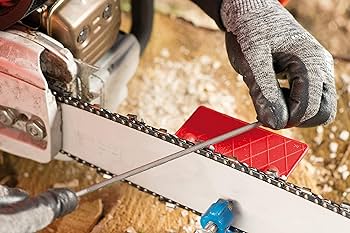Sharpen Stump Grinder Teeth
Stump grinders are useful equipment for landscaping professionals and homeowners, but their success is dependent on sharp teeth. This post will go over how to sharpen stump grinder teeth. The technicalities of sharpening stump grinder teeth to ensure peak performance and longevity. This article discusses everything from the importance of sharp teeth to step-by-step sharpening processes.
The importance of sharpening stump grinder teeth
Sharp stump grinder teeth are essential for quick and successful stump removal. Sharp stump grinder teeth can easily penetrate wood fibers, allowing the grinder to eat through stumps quickly and with little effort.
To begin, sharp teeth lessen the burden on the grinder’s engine, resulting in lower fuel consumption and a longer machine lifespan. Second, they provide a cleaner and smoother grinding action, resulting in finer wood chips and trash that are easier to dispose of.
Furthermore, sharp teeth reduce vibration and strain on the operator, creating a safer and more comfortable working environment. They also help to keep the stump grinder’s cutting mechanism in good condition, avoiding the need for frequent maintenance and repairs. Overall, sharp stump grinder teeth improve productivity while reducing costs and increasing equipment longevity in stump removal operations.
Signs That Your Stump Grinder Teeth Need Sharpening
Decreased Grinding Efficiency: You may need to sharpen the teeth if your stump grinder struggles to cut through wood or takes longer than usual to grind through stumps.
Uneven Grinding Results: Sharp teeth generate smooth and uniform grinding results, whereas dull teeth might leave uneven surfaces or jagged edges on the stump.
Dull teeth require more effort from the grinder’s engine to cut through wood, resulting in higher fuel consumption. If you see a considerable rise in fuel use without a matching increase in productivity, it may suggest dull teeth.
Dull teeth may cause the stump grinder to vibrate excessively or produce louder than typical working noise due to greater pressure on the machine.
Visible Wear: Check the teeth for signs of wear, such as rounded edges or chips. Dull teeth will exhibit more evident indications of degradation than sharp teeth.
Difficulty in Penetration: If the grinder struggles to penetrate the stump or continually becomes stuck, it is most likely due to dull teeth that cannot bite into the wood effectively.
Tools and equipment
Grinding equipment includes a bench grinder, diamond wheel, rotary tool, file, sharpening jig, angle grinder, honing stone, stump grinder, tooth sharpener, and Dremel tool.
How to sharpen stump grinder teeth
Sharpening Stump Grinder Teeth: A Step-by-Step Guide
Precautions: Before beginning, wear protective gear such as gloves, goggles, and ear protection.
Inspect teeth: Examine each tooth for injury or wear. Remove any debris or buildup from the teeth and surrounding areas.
Secure Grinder: Using a bench grinder or equivalent instrument, tightly clamp the stump grinder tooth to prevent movement while sharpening.
Sharpening Tool Selection: Choose suitable sharpening tools based on the condition of the teeth and your preferences.
Set Angle: Determine the ideal angle for honing your teeth. Follow the manufacturer’s instructions or use a honing jig to maintain consistency.
Sharpen teeth: Carefully sharpen each tooth using a steady hand and uniform pressure. As you move the sharpening tool along its cutting edge, follow the tooth’s original outline.
Maintain Consistency: Aim for uniform sharpening across all teeth to ensure balanced performance while operating.
Check sharpness: After honing the teeth, visually evaluate them for sharpness and consistency. Examine a few teeth on a stump to ensure a clean cut.
Repeat if necessary. If any teeth remain dull or damaged, repeat the sharpening procedure until all teeth are sharp and in good condition.
Clean and lubricate the sharpening tools and teeth to remove metal shavings or residue. If necessary, lubricate the grinder’s moving parts.
Final examination: Make sure all teeth are sharp and ready for use after finishing the sharpening.
Store sharpening tools and equipment away from moisture and pollutants until you’re ready to use them again.
How often should I sharpen stump grinder teeth?
The frequency of grinding the wood and the tooth’s condition are crucial factors to consider. Generally, we recommend sharpening the stump grinder teeth.
Regular Maintenance Programme: Create a regular maintenance program based on the frequency of use and the state of the teeth. For heavy use or grinding of abrasive materials, more frequent sharpening may be required.
Visual Inspection: Check your teeth regularly for dullness, wear, or injury. If your teeth appear dull or do not cut properly, it is time to sharpen them.
Monitor the stump grinder’s performance while it is in operation. You may need to sharpen the teeth if you notice a decrease in cutting efficiency or an increase in fuel consumption.
Preventive Sharpening: Some operators prefer to sharpen teeth before they become too dull. This method promotes constant cutting performance and extends the life of the teeth.
Tips for Keeping Your Stump Grinder Teeth Sharp
Maintaining sharp stump grinder teeth is critical for maximum performance and durability. Here are some tips for keeping your grinder teeth sharp:
Regular Inspections: Examine your teeth regularly for signs of wear, damage, and dullness. Address any problems to prevent them from worsening in the future.
Maintain cleanliness: After each use, clean the teeth and surrounding area to eliminate debris, wood chips, and sap buildup. This avoids corrosion and provides proper grinding.
Proper Storage: When not in use, store the stump grinder in a dry, covered area to avoid moisture and rust. Store sharpening tools and equipment securely to prevent damage.
Sharpening Schedule: Create a regular sharpening schedule based on use and condition. Sharpen your teeth before they become too dull to continue cutting efficiently.
Use the Proper Technique: When sharpening teeth, use the proper equipment and follow the suggested techniques to ensure consistent sharpness and avoid unnecessary wear.
Replace as necessary: To ensure overall grinder performance and safety, replace the teeth as soon as they become significantly worn or beyond repair.
By following these guidelines, you can keep your stump grinder teeth sharp, extending the life of your equipment and increasing grinding efficiency.
Related Posts:
Common Mistakes to Avoid When Sharpening Stump Grinder Teeth
When sharpening stump grinder teeth, it’s critical to prevent frequent blunders that can jeopardize their efficacy and durability. Here are some mistakes you should avoid:
Overheating: Excessive pressure or prolonged sharpening can cause the teeth to overheat, resulting in temper loss and reduced hardness. This leads to faster dulling and lower cutting performance.
Inconsistent Angles: Sharpening teeth at different angles may cause uneven cutting and premature wear. Always use a sharpening jig or guide to keep the angle uniform across all teeth.
Uneven Grinding: Failure to grind the entire cutting edge evenly might result in uneven sharpness and lower cutting efficiency. When honing each tooth, ensure that you use even pressure and movement.
Ignoring Damage: Failing to repair apparent damage, such as chips or cracks, before sharpening might weaken the tooth and cause early failure. Before you sharpen your teeth, properly inspect them and repair any damage.
Using Dull Tools: Sharpening with dull tools or abrasive wheels can produce poor results and further damage the teeth. Keep your sharpening tools in good shape and replace them as needed.
Avoiding these frequent mistakes allows you to successfully sharpen stump grinder teeth while maintaining optimal cutting performance for your equipment.
FAQS
How can I determine if my stump grinder’s teeth require sharpening?
Reduced grinding efficiency, uneven grinding results, higher fuel consumption, excessive vibration or noise during operation, and apparent signs of wear or damage to the teeth are all indications that your stump grinder’s teeth require sharpening.
Can I sharpen the stump grinder’s teeth myself?
You can sharpen stump grinder teeth using the proper tools and techniques. For best performance, however, safety precautions and regular sharpening angles are required.
What is the most effective sharpening angle for stump grinder teeth?
The ideal sharpening angle for stump grinder teeth is normally between 25 and 30 degrees. A sharpening jig or guide can help keep the angle consistent across all teeth, resulting in uniform sharpness.
How can I prevent my stump grinder teeth from overheating while sharpening?
Avoid overheating, applying too much pressure, and maintaining a consistent grinding motion. To dissipate heat and maintain a metal temper, dip the teeth in water or use a coolant regularly.
Can I sharpen the teeth of a damaged stump grinder?
In the majority of cases, yes. However, the level of damage will have an impact on how successful sharpening is. Sharpening generally works for minor chips or nicks, but severe damage may require tooth replacement.
Should I replace or sharpen the teeth on my stump grinder?
Replace the teeth if they have become severely worn, irreparably broken, or have lost their cutting edge. However, if the teeth are in good shape but dull, sharpening can help to restore their cutting performance.
Conclusion
How to sharpen stump grinder teeth is important for keeping your stump grinder running smoothly and effectively. You can keep your grinder teeth sharp and ready for maximum performance by employing the proper procedures and tools. Regular sharpening improves cutting efficiency but also increases tooth longevity, decreasing the need for frequent replacements. Remember to prioritize safety, utilize proper sharpening angles, and swiftly resolve any symptoms of wear or damage to keep your stump grinder running smoothly.





